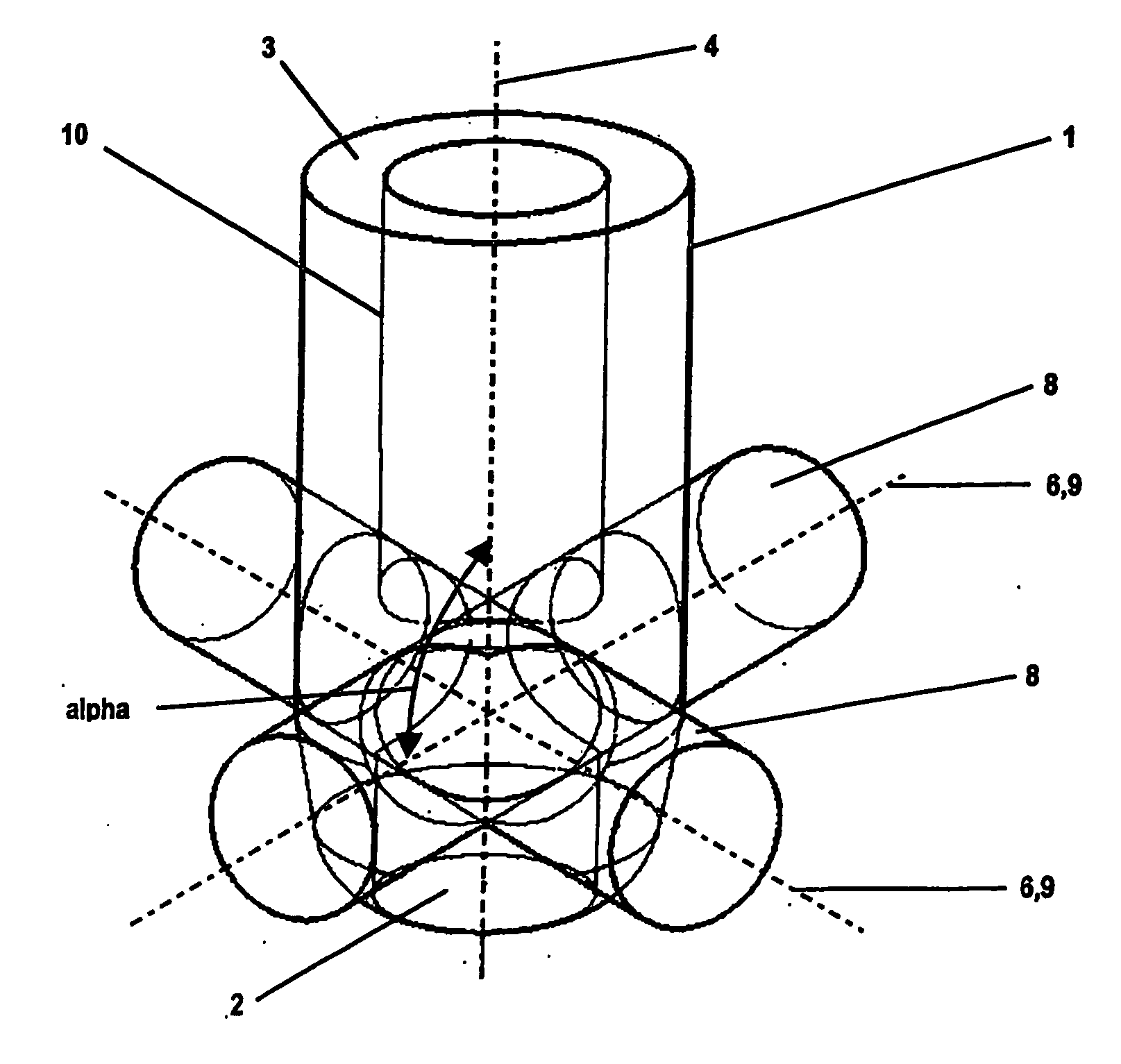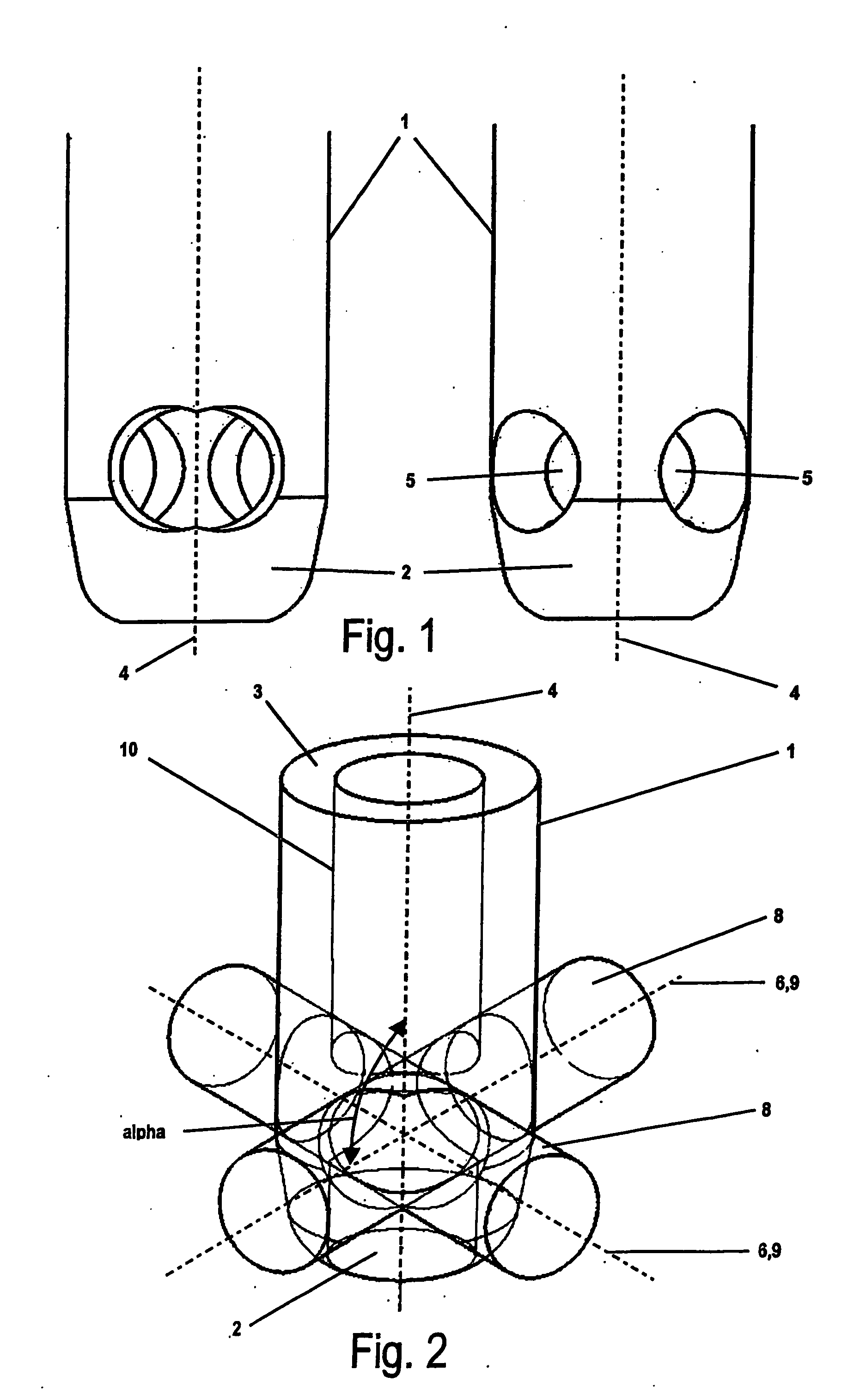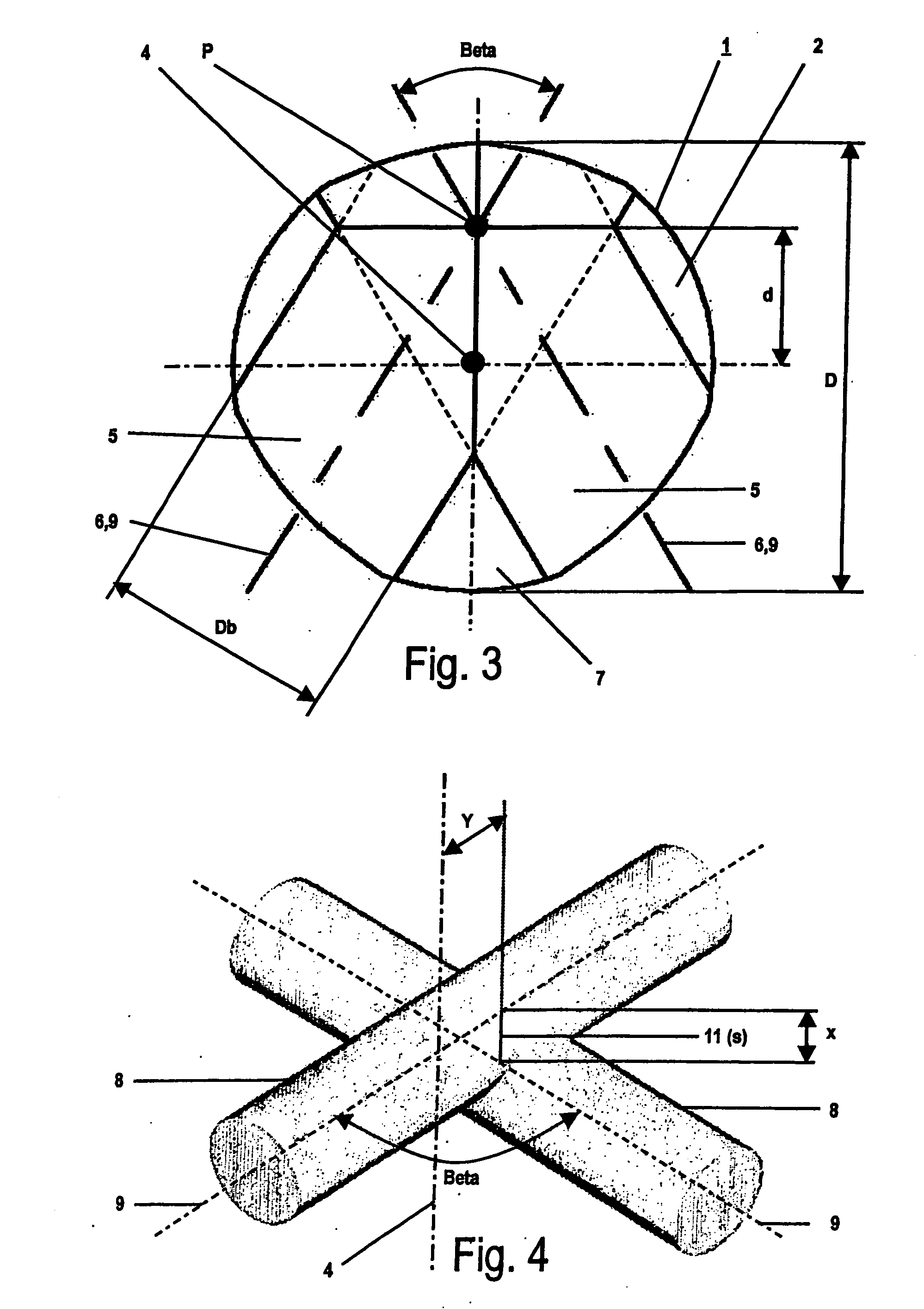Intramedullary nail
a technology of intramedullary nail and nail, which is applied in the field of intramedullary nail, can solve the problems of considerable mechanical weakening and achieve the effect of lessening the strength of the intramedullary nail
- Summary
- Abstract
- Description
- Claims
- Application Information
AI Technical Summary
Benefits of technology
Problems solved by technology
Method used
Image
Examples
Embodiment Construction
[0020] The intramedullary nail illustrated in FIGS. 1 to 3 is provided with a distal end 2 suitable for insertion in the medullary space of a tubular bone, a proximal end 3, a central longitudinal axis 4 and two cross holes 5 with a hole axis 6, each of which defines a virtual borehole cylinder 8 with a cylinder axis 9 corresponding to the hole axis 6 of the defining cross hole 5. The intramedullary nail has generally a constant diameter D and a longitudinal hole 10 coaxial to the central longitudinal axis 4.
[0021] As illustrated in FIG. 3, the borehole cylinders 8 of the two cross holes 5 penetrate each other, wherein the cylinder axes 9 of the two mutually penetrating borehole cylinders 8 intersect at point P, which is at a distance d=0.4 D from the longitudinal axis 4. In other words, the point P does not lie on the longitudinal axis 4 of the intramedullary nail.
[0022] The mutually penetrating borehole cylinders 8 are provided with two separate entrance points in the intramedul...
PUM
 Login to View More
Login to View More Abstract
Description
Claims
Application Information
 Login to View More
Login to View More - R&D
- Intellectual Property
- Life Sciences
- Materials
- Tech Scout
- Unparalleled Data Quality
- Higher Quality Content
- 60% Fewer Hallucinations
Browse by: Latest US Patents, China's latest patents, Technical Efficacy Thesaurus, Application Domain, Technology Topic, Popular Technical Reports.
© 2025 PatSnap. All rights reserved.Legal|Privacy policy|Modern Slavery Act Transparency Statement|Sitemap|About US| Contact US: help@patsnap.com



